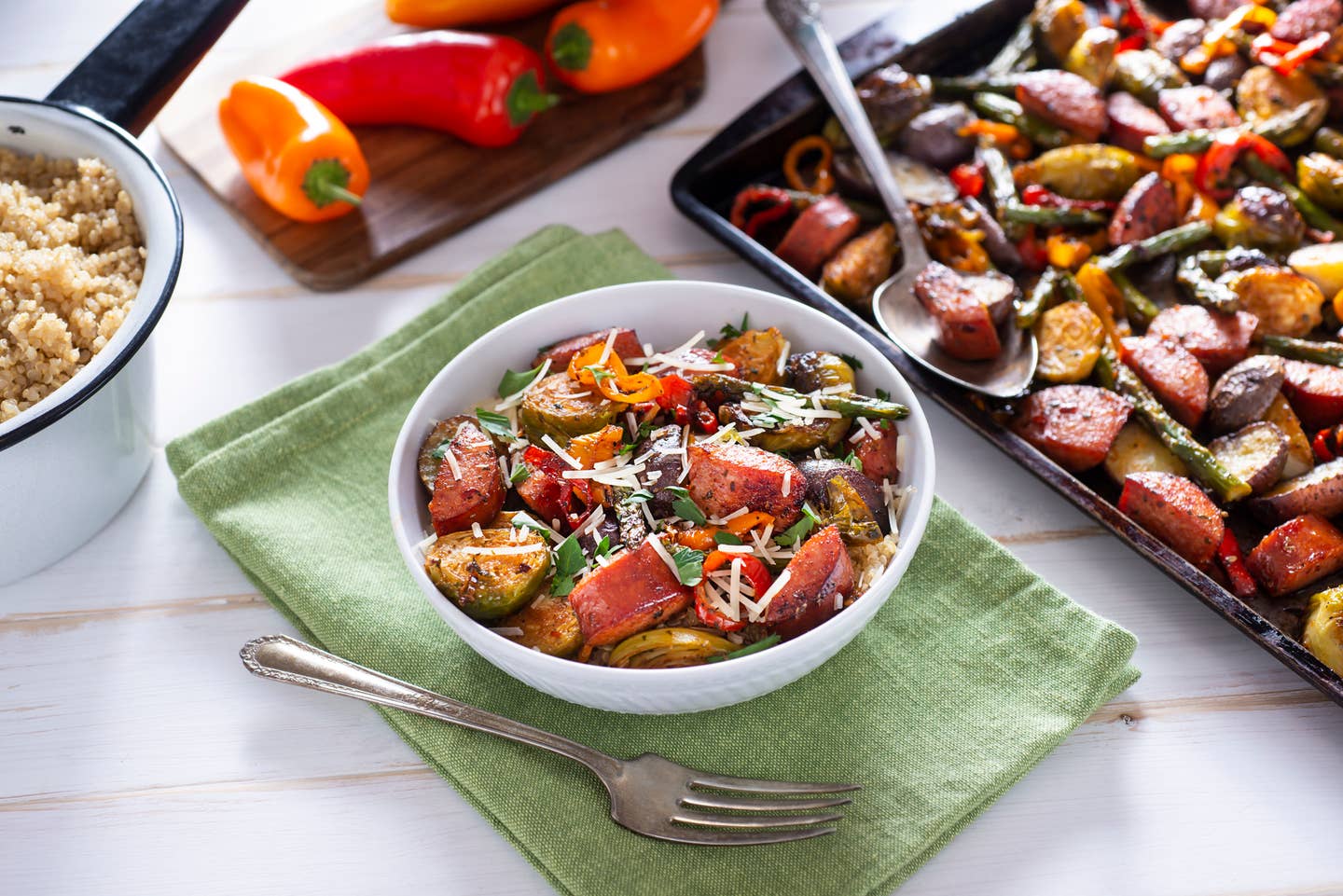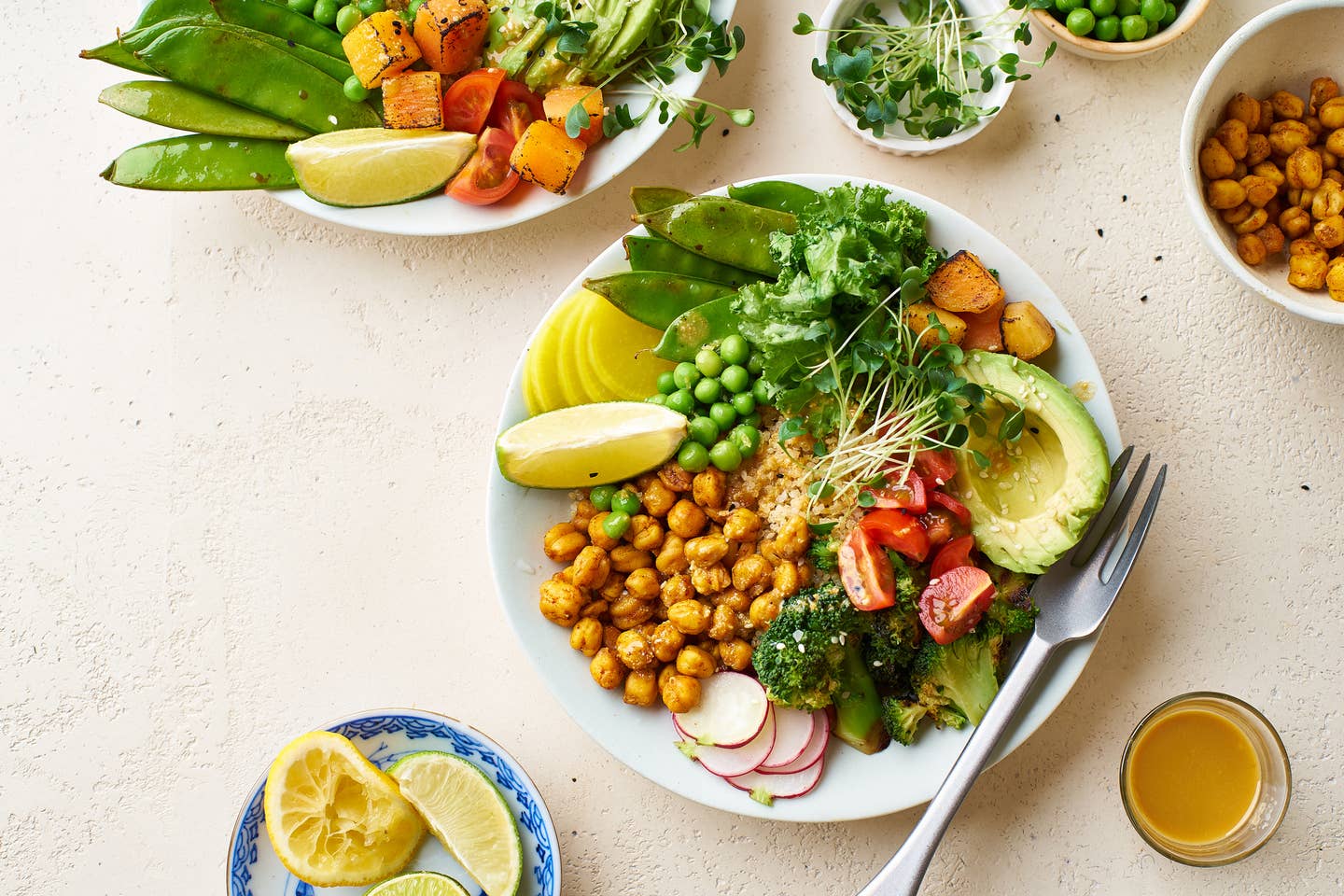
7 Simple Ways to Make Vegetables Taste Amazing, According to Nutritionists
If only vegetables tasted like that chocolate date brownie we had after dinner. Sigh. They don’t. But there’s good news: With some savvy tips, you can make vegetables taste almost as good as a treat. And there’s good reason to be eating vegetables because they’re loaded with vitamins, minerals, and antioxidants that keep your body and even your mind in optimal condition. “Aim to eat at least 2-3 cups of veggies every day, with a goal of filling at least a quarter of your plate or bowl with veggies at each meal,” advises Lexi Endicott, RD, LD, CCMS, of To Taste. “Eat a variety of veggies throughout the week: leafy greens, red and orange and yellow, starchy, legumes, and others. Try to incorporate all colors throughout the week: red, orange, yellow, green, purple, white, and brown. The more natural colors on your plate, the better!”
New guidelines for fruits and vegetables are “five a day” across the two categories. “It is encouraged that this is a mixture of two fruits and three vegetables,” says Trista K. Best, MPH, RD, LDN, of Balance One. (For more on the “magic number” according to the science of fruits and vegetables you should eat per day, check out this article).
Below, nutritionists share their top tips for infusing vegetables with delicious flavor.
1. Roast your vegetables
“Roasting brings out the natural sweetness in vegetables and creates an enjoyable texture,” says Endicott. “Keep it simple with just oil and salt, or add fresh or dried herbs and spices for fun flavor variations.” Our current favorite weeknight dinner? This roasted vegetable orzo with bell peppers, zucchini, and cherry tomatoes that you’ll want to make again and again For something to soak up the last of winter, try To Taste’s roasted spiced cauliflower.
2. Try adding liquid aminos
Ah, the little-known ingredient that could. “Currently my favorite way to make veggies taste better is sautéing them in liquid aminos,” shares Best. “This is a gluten-free soy sauce alternative that adds a delicious flavor without any inflammatory ingredients,” she continues, adding that it makes cooking sans oil and extra fat easy as well. Another idea? Try liquid aminos to accompany your next vegan sushi feast.
3. Season ‘em up
Channel your inner Emeril Lagasse and say “bam,” as you shake on the spices, friends. “Don't be shy with the seasoning,” says Tayler Silfverduk, RDN. “You would be amazed at how well vegetables carry spices and flavor. My favorite way to spice up my vegetables is with smoked paprika, garlic powder, and salt.”
4. Go for a semi-zoodle dinner
Let’s be real, a heaping plate of spiralized zucchini “noodles,” isn’t fooling your taste buds. That’s why Breanna Woods, MS RD, co-creator of the Blogilates 90 Day Journey Meal Plan, suggests mixing spiralized zucchini into a regular spaghetti dish with your favorite sauce. “You'll sneak in a serving of veggies without feeling like you're sacrificing the food you really want,” she says.
5. Add some fat
First off, your body needs fat, one of the three macronutrients along with protein and carbohydrates, and second off, it helps with satiation which can mean fewer snack attacks later on. “Not only will adding fat (like olive oil) help make the vegetables more satisfying but can also improve the nutrient absorption of the vegetable (especially, if you're enjoying them raw in a salad),” says Silfverduk, pointing to this study about carotenoid (a type of antioxidant) and fat-soluble vitamin bioavailability in salad vegetables.
6. Pickle them
There’s just nothing like crunching into a satisfying pickle, and something makes them taste even more satisfying when you embark on a little DIY pickle action.
“If you're a fan of pickles, I promise you cucumber is not the only vegetable that is delicious when pickled. I've wowed many friends and family with quick pickled carrots, cucumber, and celery (seriously, pickled celery is a game-changer),” says Silfverduk. “And if you're feeling especially adventurous, you can try your hand at pickling through fermentation and add an extra boost of nutrient availability and probiotics to the mix.” Here’s our primer on how to make tasty, healthy pickles at home.
7. Slip them into a smoothie
“Frozen cauliflower makes for a great swap over bananas into a smoothie. If you still need that sweetness that is missing from the banana, add a Medjool date in for that sweet flavor,” offers Jen Hernandez RDN, CSR, LDN, Registered Dietitian of Plant-Powered Kidneys,” also noting that adding in greens like kale to smoothies can be great if you’re not normally a fan of leafy greens. “I recommend blending up the kale with the smoothie liquid first to help break it up before then adding in the rest of your smoothie ingredients,” she says.
More From The Beet






